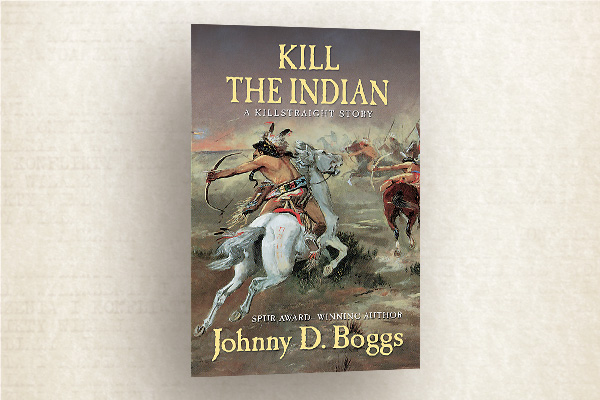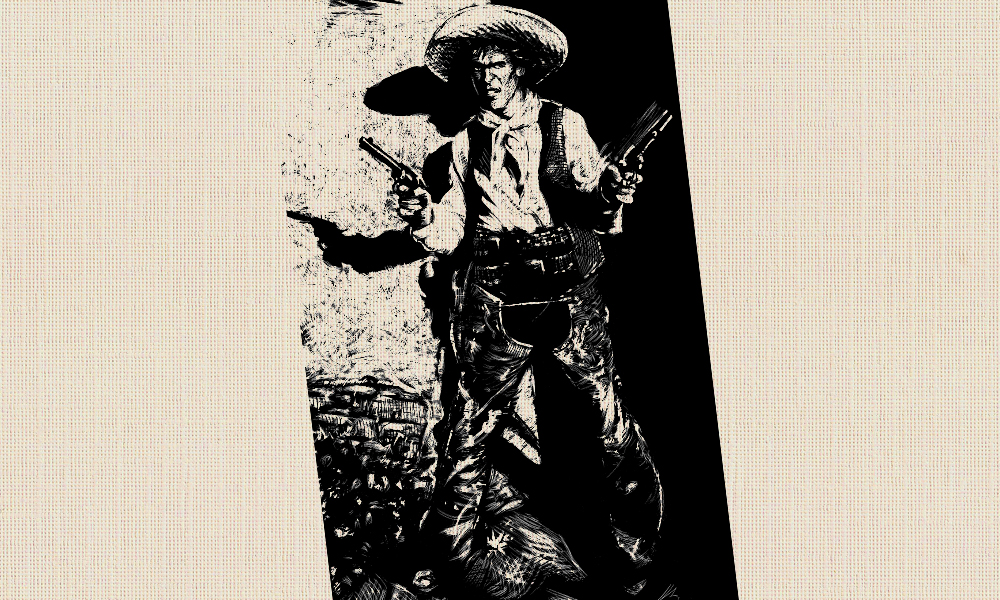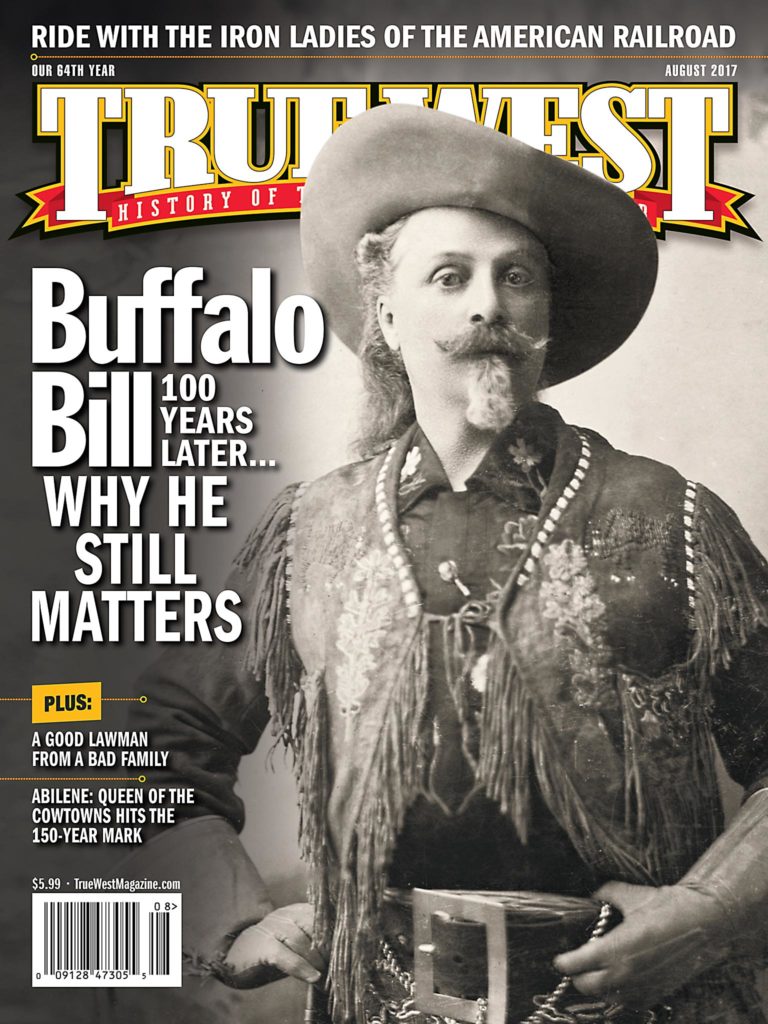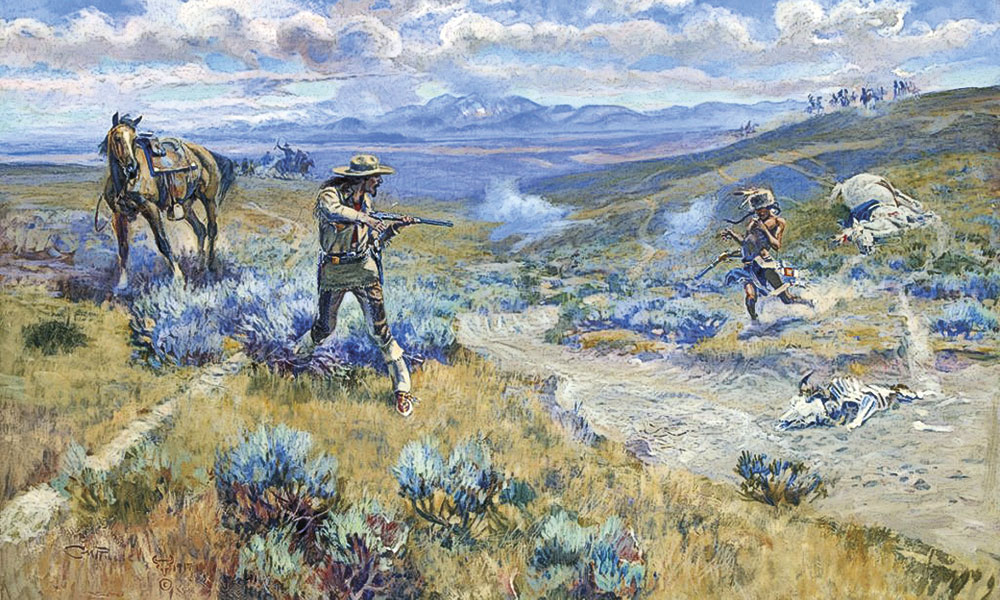
– True West archives –
A mere two weeks have passed since the 5th Cavalry learned of George Custer’s devastating defeat at the Battle of the Little Bighorn. Some 350 officers and troops ride out of Fort Laramie in Wyoming Territory.
With Baptiste “Little Bat” Garnier scouting the front, the troops learn that 800 Northern Cheyennes and some Sioux, led by Morning Star (Dull Knife), have departed Red Cloud Agency to join Sioux Chief Sitting Bull.
Along for the ride was William F. “Buffalo Bill Cody.” Having rushed out from a stage appearance in Wilmington, Delaware, to join the battalion, Buffalo Bill was stuck wearing his stage costume, since his luggage got delayed, or perhaps lost, while traveling.
Once on the field, the flamboyantly dressed Buffalo Bill sets a trap for the advance party of Cheyennes, which includes Yellow Hair, a noted warrior.
As dawn breaks on July 17, Col. Wesley Merritt, who took over command of the troops on July 1, permits Buffalo Bill to scout the trail left by the enemy. Buffalo Bill finds the Cheyennes several miles away, but coming fast.
The warriors cannot see Merritt’s 350 well-armed men hiding in a cutbank along Warbonnet Creek in Nebraska.
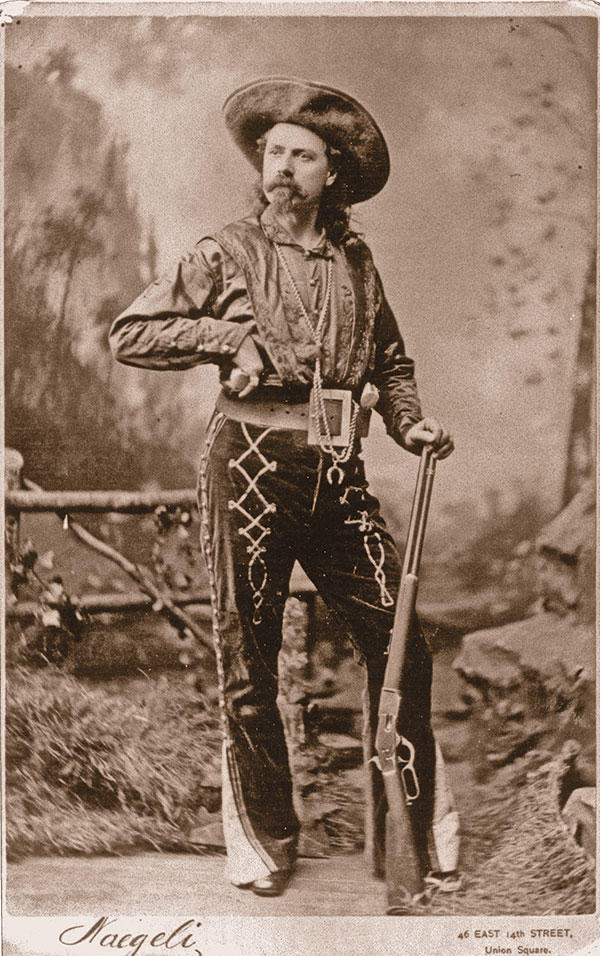
The Cheyennes do see two couriers approach, carrying messages for Merritt.
When the Cheyennes are about 90 yards from Warbonnet Creek, Lt. Charles King jumps up and shouts down to Buffalo Bill, “Now, lads, in with you!”
Buffalo Bill and his friends spur their horses out of the creek bottom and shoot at the Cheyennes, who, caught off guard, return fire. After that initial volley, all of the Cheyennes and troops seek cover, except for Yellow Hair and Buffalo Bill.
Both Buffalo Bill and Yellow Hair fire at each other, at almost the same time. The Cheyenne warrior’s shot misses, but Buffalo Bill’s shot kills Yellow Hair’s horse, sending the warrior tumbling into the dirt. Cody then shoots and kills Yellow Hair before he can get up.
Instead of retreating, Buffalo Bill rides over to Yellow Hair, lying face down in the grass, and dismounts. With his knife, he scalps the Cheyenne.
Raising Yellow Hair’s war bonnet and scalp in the air, as troopers ride by to give chase to the Cheyennes, Buffalo Bill cries out, “The first scalp for Custer!”
The fight is over, but the embellished version of this battle grows and grows, finally becoming part of a heroic action piece in Buffalo Bill’s Wild West tours, called “First scalp for Custer!”
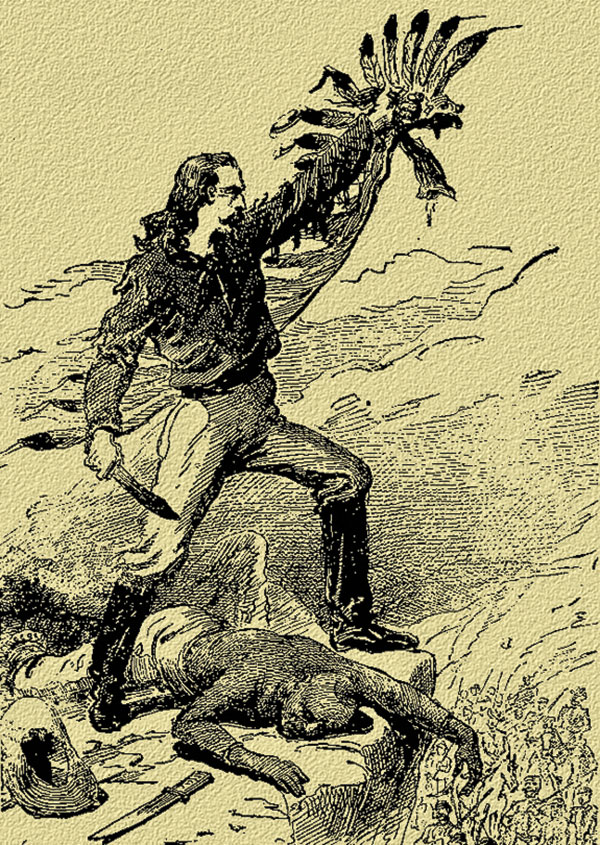
– True West archives –
The Most Outlandish Outfits Ever Worn to a Gunfight
As bizarre as this fact may seem, eyewitnesses claim that the flamboyant stage costume Buffalo Bill wears in this circa 1876 photograph is the same one he wears in the fight at Warbonnet Creek. He looks more like a “Pimp of the Plains” than a frontier scout. His friend and fellow campaigner, Lt. Charles King calls the outfit a “Mexican vaquero costume.” Indeed, on steroids.
King also describes the Cheyenne adversaries’ clothes, exclaiming “warfare was never more beautiful.” Yellow Hair reportedly wears a feathered bonnet, tin bracelets, a charm, a beaded belt with a blonde scalp hanging from it and a breechcloth fashioned from an American flag.
Talk about “killer clothes!” Imagine if you were a costomer for a Western film, and two of your principals showed up wearing those outfits?
Aftermath: Odds & Ends
After the fight, William F. “Buffalo Bill” Cody collected Yellow Hair’s quirt and weapons. The next day, at Camp Robinson in Nebraska, the scout boxed up his Yellow Hair trophies and shipped them to his longtime friend, Moses Kerngood, in Rochester, New York. For years afterwards, Kerngood displayed the articles in the window of his Rochester cigar store.
While the 5th Cavalry went back out on the trail, Buffalo Bill and his pal Charles King penned a glowing account of the fight, which ran in the New York Herald. The feature appeared in the Sunday edition on July 23. The Cheyenne Daily Leader picked up the news item and published a truncated version on July 28. Other newspapers followed, and the story became a national sensation.
Excusing himself from the Great Sioux War, Buffalo Bill traveled home to Rochester, where he called on Prentiss Ingraham to write a new play for his stage show. The drama was called The Red Right Hand or Buffalo Bill’s First Scalp for Custer. Buffalo Bill called it a “five act play, without head or tail, and it made no difference at which act we commenced the performance. It afforded us, however, ample opportunity to give a noisy, rattling, gunpowder entertainment and to present a succession of scenes in the late Indian war, all of which seemed to give general satisfaction.”
Buffalo Bill carried the “First Scalp for Custer” theme over to his Wild West tours, and the production ran and ran for years.
Recommended: First Scalp for Custer by Paul L. Hedren, published by Nebraska State Historical Society.

